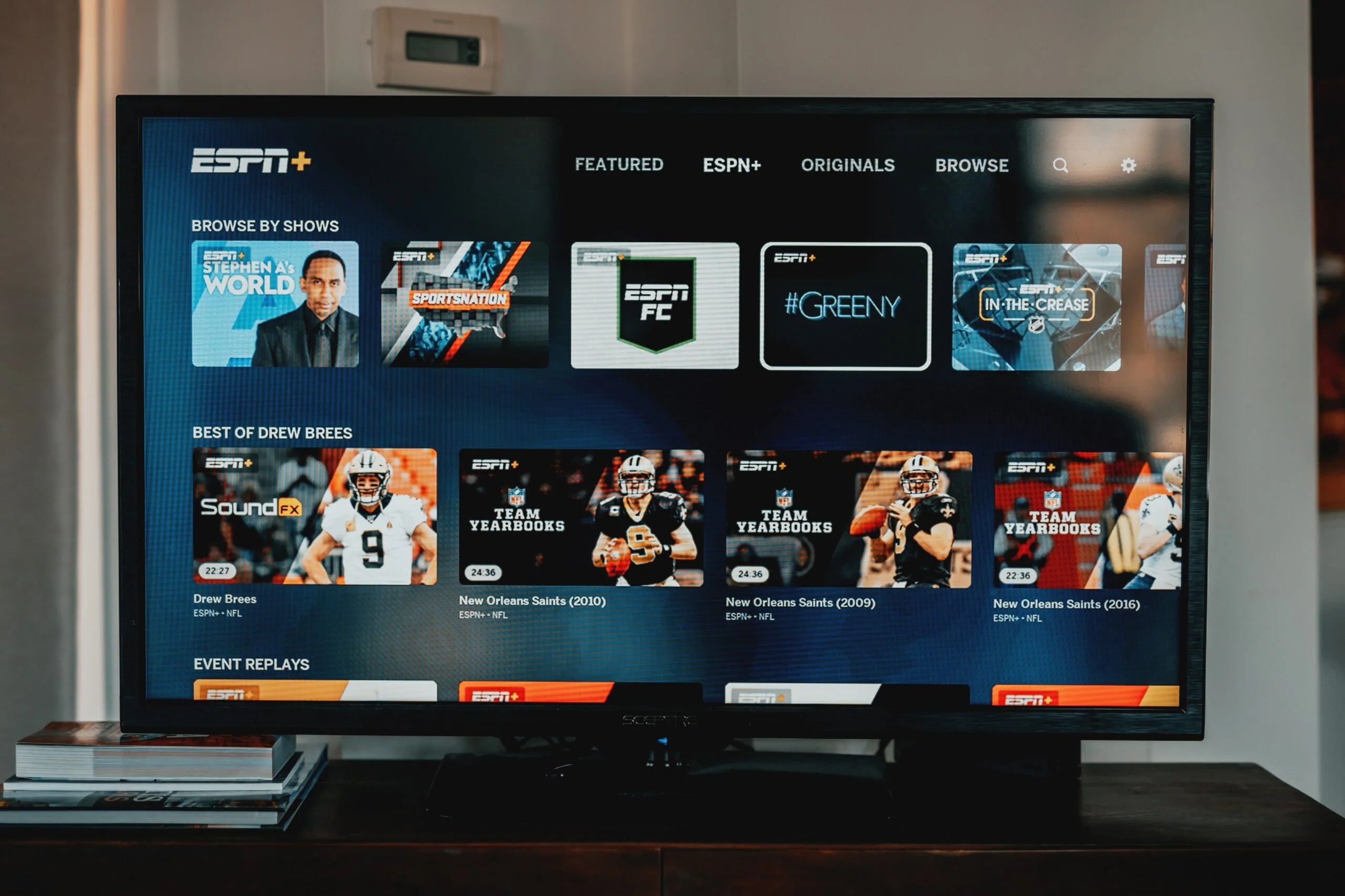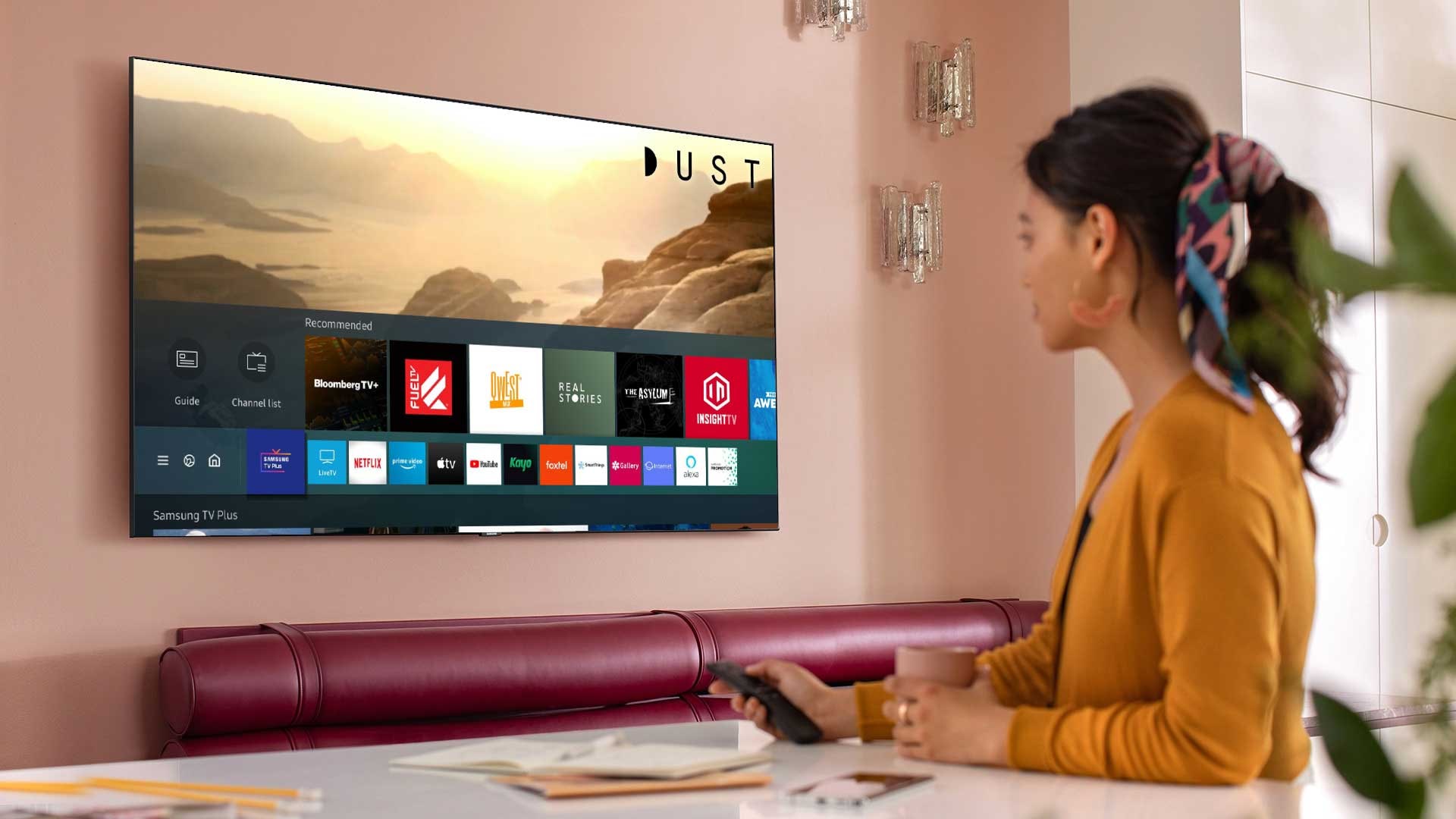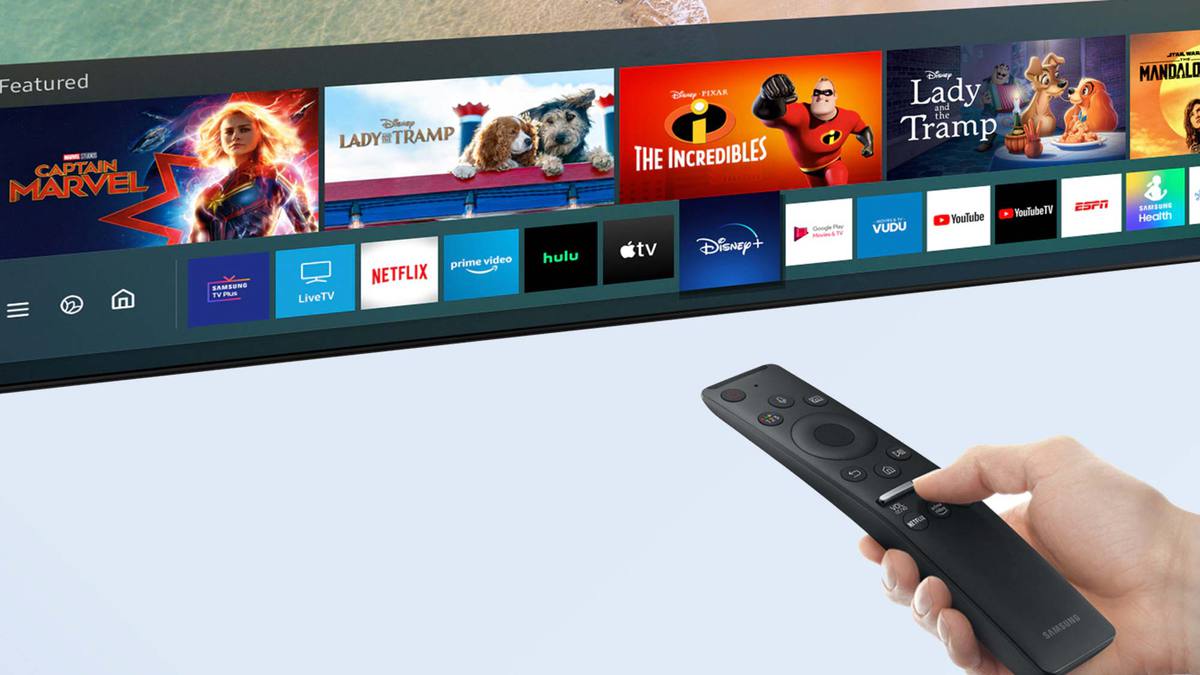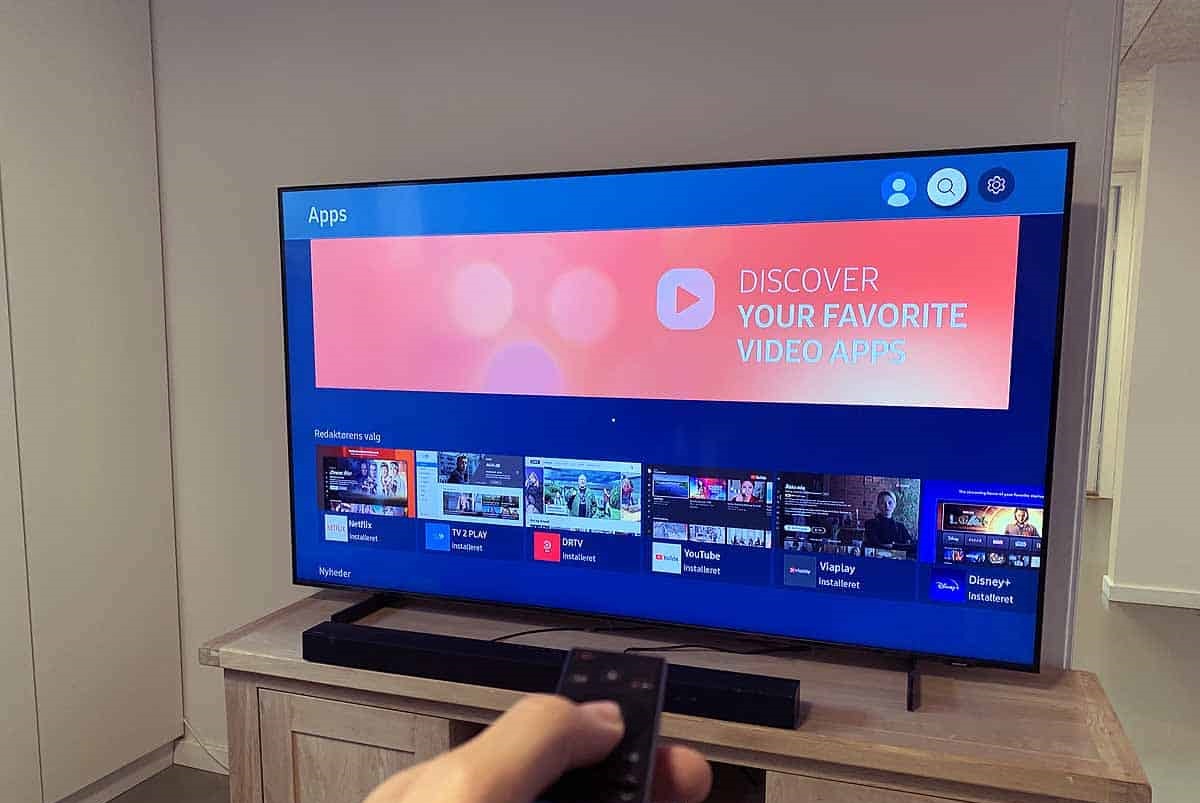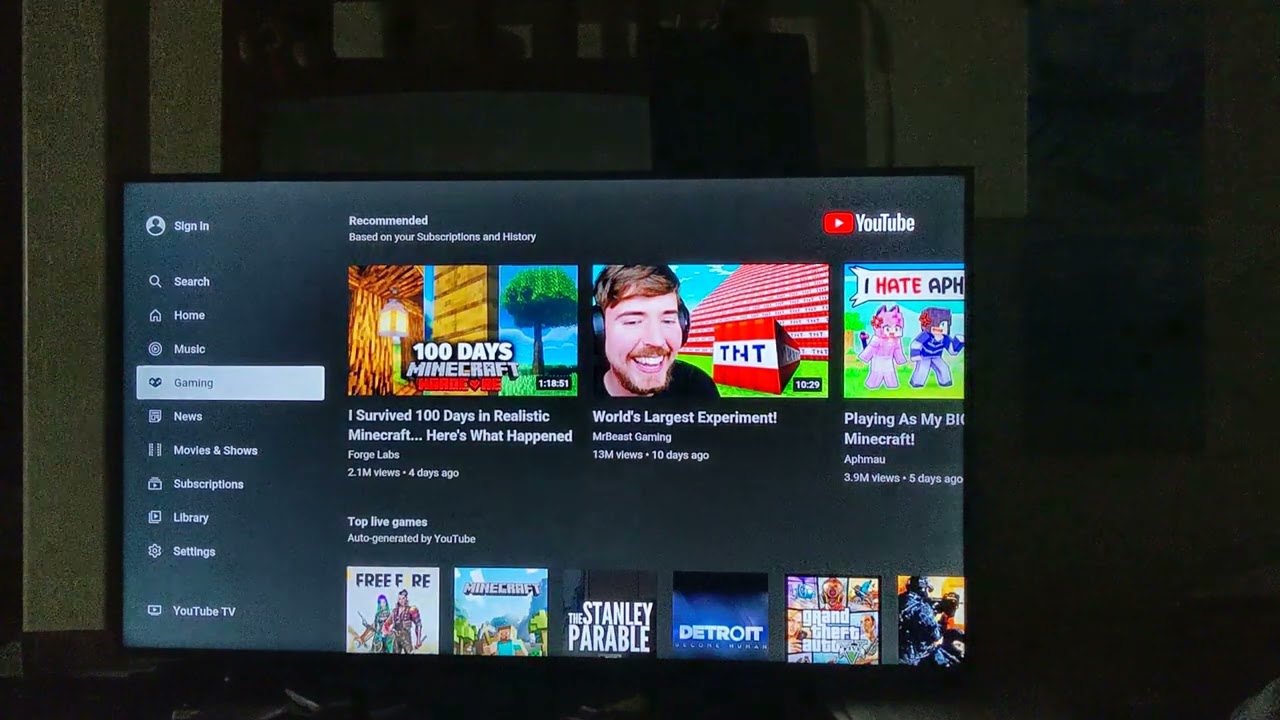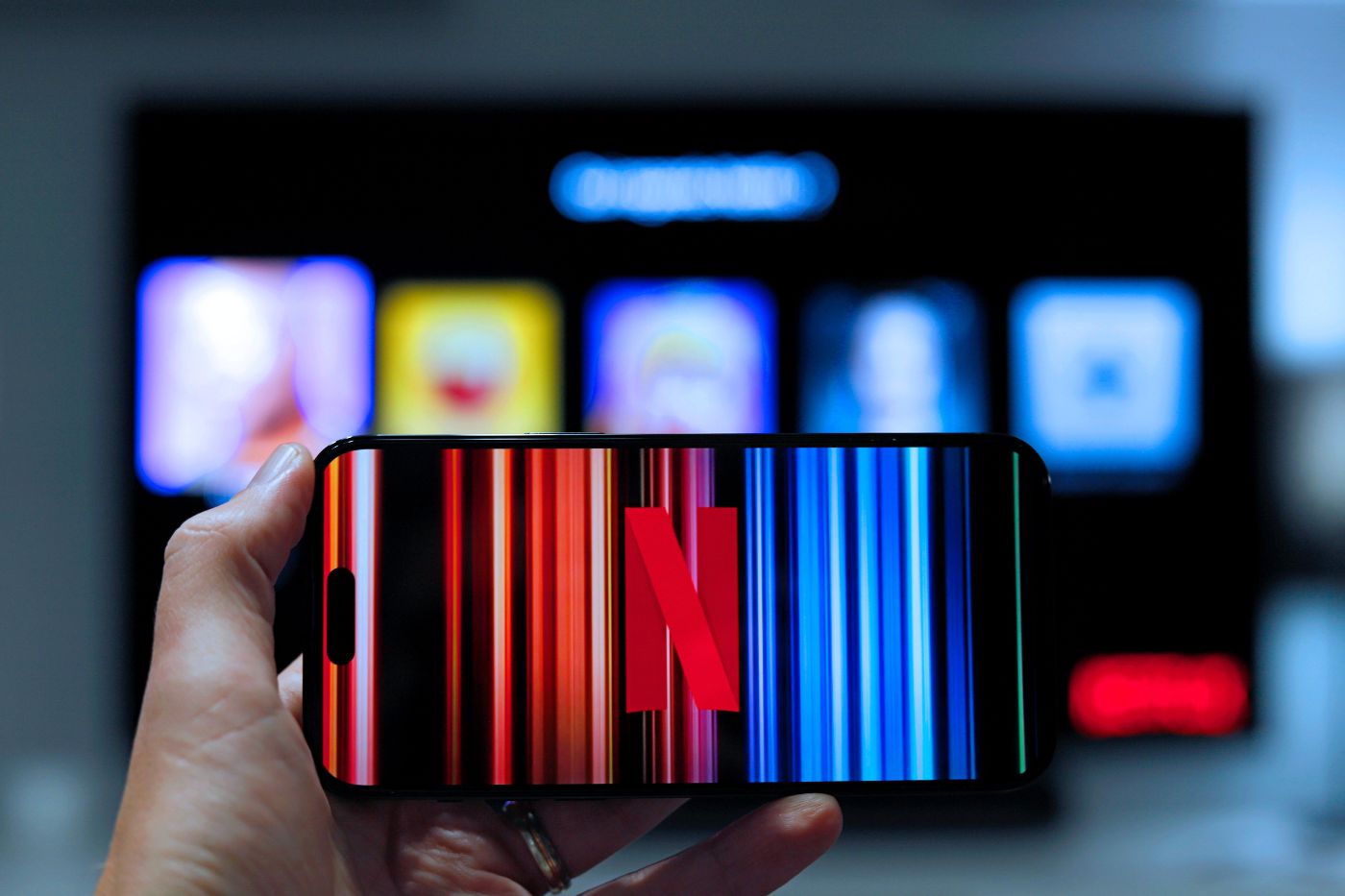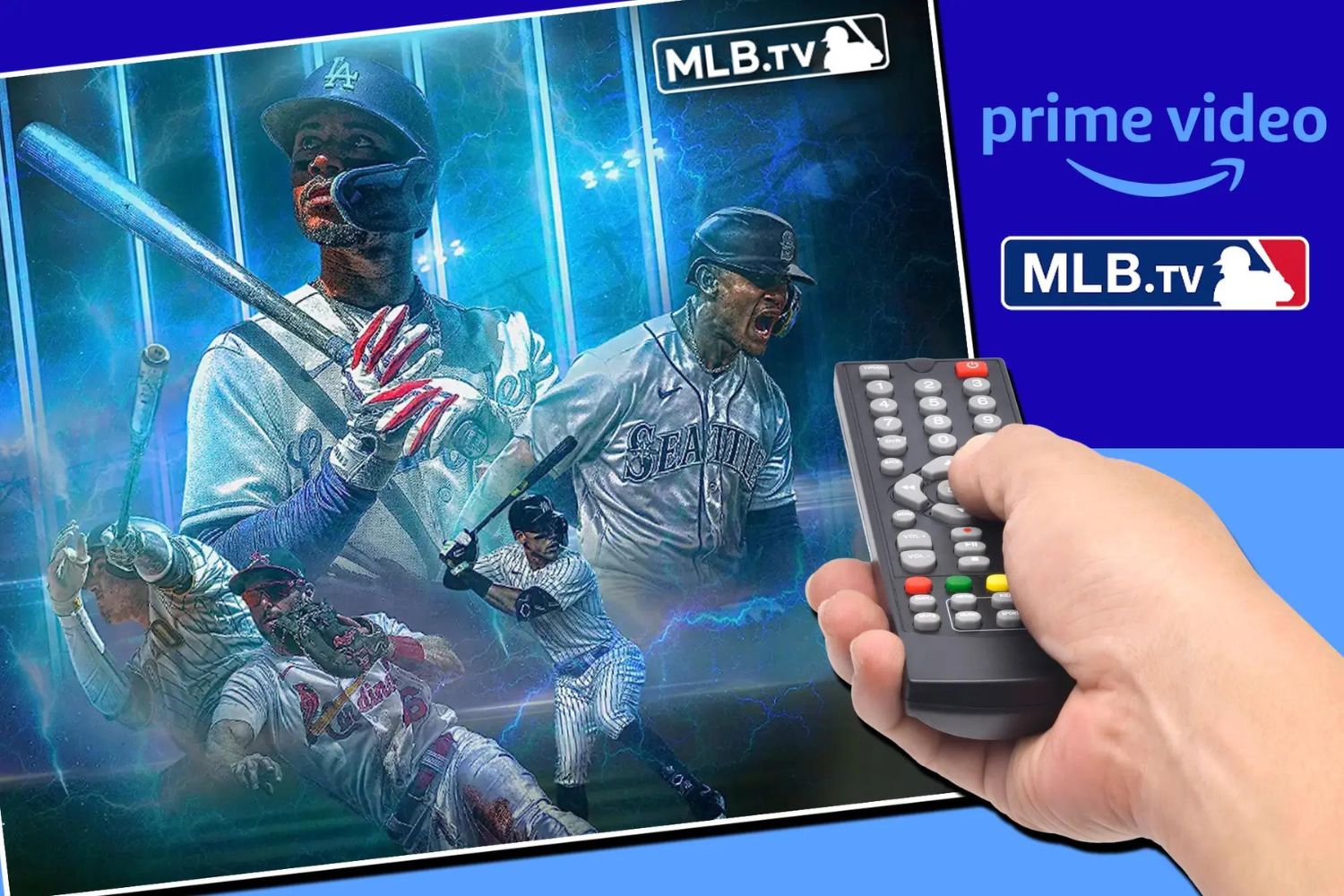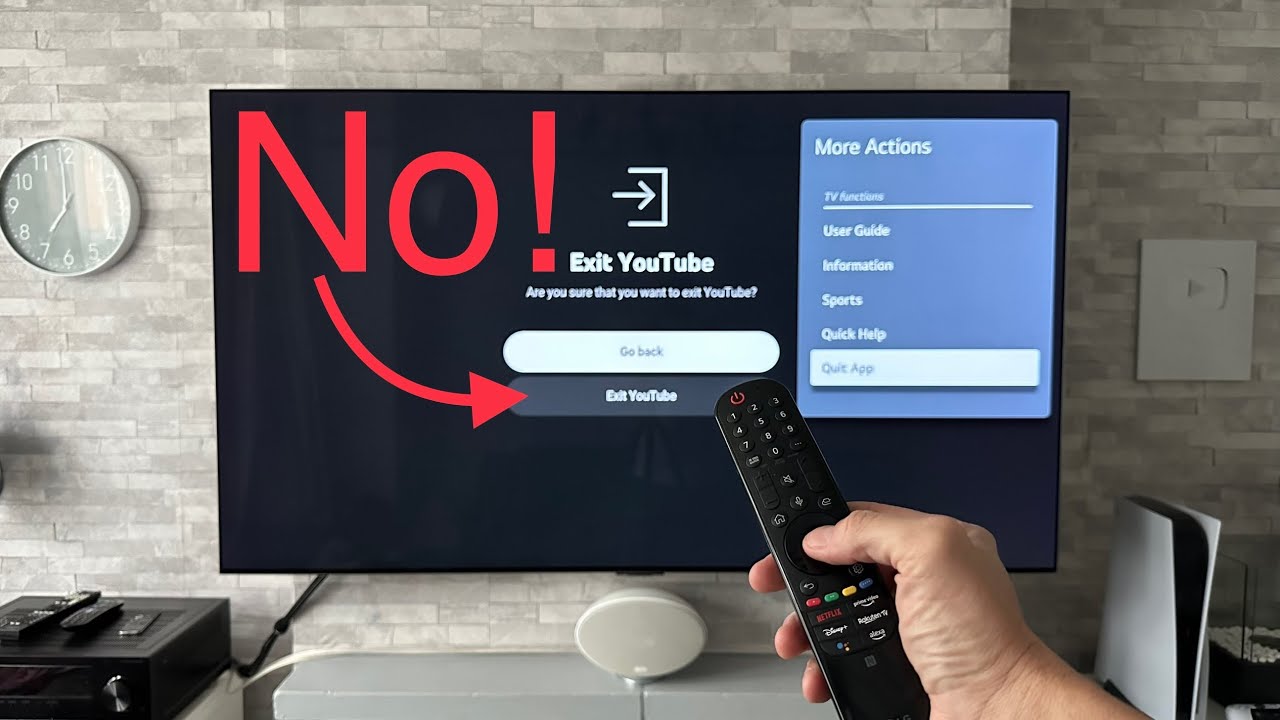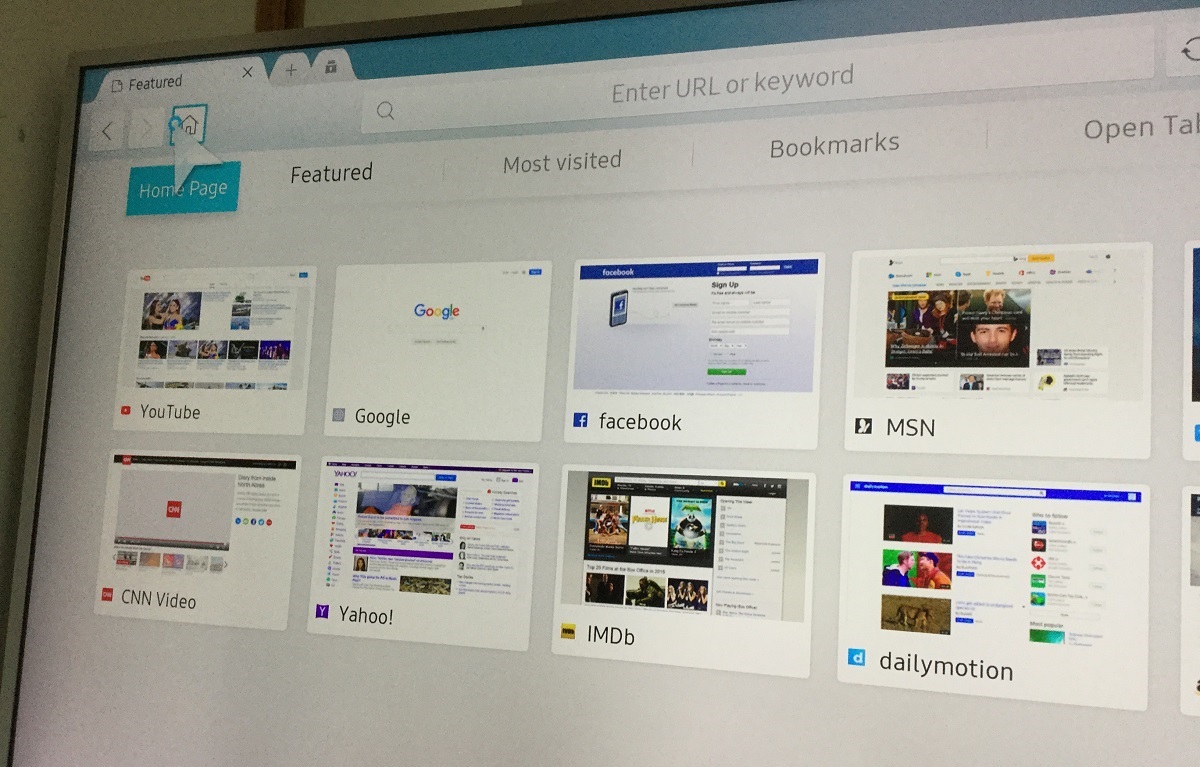Introduction
Welcome to the era of smart technology, where our televisions are no longer just a means for watching our favorite shows and movies. With the advent of smart TVs, we now have the ability to access the internet, stream content from various platforms, play games, and even control our homes with just a few clicks of a remote. However, along with this incredible functionality comes a potential downside – data consumption.
A smart TV is essentially a television that is equipped with internet connectivity capabilities. This means that it can connect to your home network, allowing you to access a wide range of online content and services. Whether it’s streaming the latest Netflix series, browsing the internet, or playing online games, a smart TV opens up a world of possibilities.
But have you ever wondered how much data your smart TV is actually using? With streaming services delivering high-quality videos and games becoming increasingly immersive, it’s important to understand the data consumption associated with these activities. By having a grasp of how much data your smart TV is using, you can better manage your internet plan and avoid any potential surprises on your monthly bill.
In this article, we will delve into the topic of data usage on smart TVs. We will explore the different factors that influence data consumption, such as streaming apps, video quality, online gaming, and software updates. Additionally, we will provide some tips and tricks to help you minimize your data usage while still enjoying all the benefits of your smart TV.
What is a Smart TV?
A smart TV, also known as a connected TV, is a television that is equipped with internet connectivity and interactive features. It combines traditional television features with the capabilities of a computer, allowing users to access a wide range of online content and services.
Unlike traditional televisions, which rely on cable or satellite connections to deliver programming, smart TVs connect to the internet directly. This opens up a world of possibilities, enabling users to stream their favorite movies and shows from popular platforms like Netflix, Hulu, and Amazon Prime Video.
Additionally, smart TVs offer a range of interactive features. They typically come with built-in Wi-Fi, allowing users to connect to their home network without the need for additional cables. This enables seamless access to online services, browsing the internet, and even social media platforms.
One of the key advantages of a smart TV is its ability to provide personalized and targeted content. Many smart TVs come with recommendation engines that analyze your viewing habits and preferences to suggest new shows or movies that you might enjoy. This tailored content experience enhances the overall television-watching experience.
Furthermore, smart TVs often come with additional connectivity options such as HDMI ports, USB ports, and Bluetooth capabilities. This enables users to connect external devices like gaming consoles, sound systems, or even smartphones to their TV, expanding its functionality and entertainment possibilities.
In recent years, smart TVs have also embraced voice control technology. With built-in microphones and voice recognition software, users can simply speak commands or queries to control their TV. This hands-free functionality adds convenience and makes navigating through TV menus or searching for content much easier.
In summary, a smart TV combines the features of a traditional television with internet connectivity and interactive capabilities. It allows users to access a wide range of online content, provides personalized recommendations, and offers additional connectivity options. With the rapid advancement of technology, smart TVs have become a popular choice for those seeking a more immersive and interactive television experience.
How Does a Smart TV Connect to the Internet?
A smart TV connects to the internet using various methods, depending on the model and manufacturer. Here are some common ways that smart TVs establish an internet connection:
- Wi-Fi: Most modern smart TVs come equipped with built-in Wi-Fi capabilities. This allows the TV to connect to your home Wi-Fi network without the need for additional cables. By accessing your Wi-Fi network, the smart TV gains internet connectivity and can access online content, streaming services, and other internet-based features.
- Ethernet Cable: Some smart TVs offer the option to connect to the internet using an Ethernet cable. This provides a wired connection to your home network, which can offer a more stable and reliable internet connection compared to Wi-Fi. To use an Ethernet cable, simply connect one end to the Ethernet port on the back of the smart TV and the other end to your home router or modem.
- Mobile Hotspot: In some cases, you may want to connect your smart TV to the internet using a mobile hotspot. If you have a smartphone with a mobile data plan, you can enable the hotspot feature and use your phone’s internet connection to provide internet access to your smart TV. Keep in mind that using a mobile hotspot may consume a significant amount of mobile data, so it’s important to monitor your usage and consider any data limits or charges imposed by your mobile carrier.
- Powerline Adapters: Powerline adapters provide another method for connecting your smart TV to the internet. These adapters use your home’s electrical wiring to transmit internet signals. Simply plug one adapter into an electrical outlet near your internet router or modem, and connect it to the router using an Ethernet cable. Then, plug the other adapter into an outlet near your smart TV and connect it to the TV using another Ethernet cable. This creates a wired internet connection without the need for running cables all over your home.
Once your smart TV is connected to the internet, you may need to go through a setup process to configure the network settings and connect to your Wi-Fi network. The exact steps will vary depending on the brand and model of your smart TV, but generally involve selecting your network from a list of available networks and entering the Wi-Fi password.
It’s worth noting that the internet connection speed and quality can impact your smart TV’s performance. If your internet speed is slow, you may experience buffering or lower quality streaming. To ensure a smooth streaming experience, it’s recommended to have a fast and reliable internet connection with sufficient bandwidth to handle the demands of streaming services and online content.
Streaming Apps and Data Usage
One of the primary features of a smart TV is the ability to stream content from a wide variety of apps and platforms. Streaming apps like Netflix, Hulu, Amazon Prime Video, and YouTube offer an extensive library of movies, TV shows, and other video content. However, it’s important to be aware of the data usage associated with these apps.
Streaming apps consume data as they deliver video content to your smart TV. The amount of data used depends on several factors, including the video quality and the length of time you spend streaming. Higher-quality video streams, such as those in HD or 4K resolution, require more data compared to lower-quality streams.
On average, streaming services consume around 1-3 GB of data per hour when streaming in standard definition (SD). For high-definition (HD) streaming, the data usage can range from 3-7 GB per hour, while streaming in 4K ultra-high definition (UHD) can consume 7-20 GB of data per hour. These figures can vary depending on the specific streaming service and the content being streamed.
It’s important to keep track of your data usage and consider the limitations of your internet plan. If you have a monthly data cap or a limited internet package, excessive streaming can quickly eat into your data allowance. To manage your data usage, here are a few tips:
- Adjust Video Quality: Most streaming apps allow you to adjust the video quality to reduce data usage. If you’re concerned about data consumption, consider lowering the video quality to standard definition (SD) instead of high definition (HD) or ultra-high definition (UHD).
- Download Content: Some streaming apps offer the option to download content for offline viewing. By downloading movies or TV shows while connected to Wi-Fi, you can save on data usage when watching them later.
- Monitor Usage: Check your smart TV settings or your internet provider’s online portal to track your data usage. This will help you stay within your data cap and avoid any unexpected charges.
- Use Wi-Fi Instead of Mobile Data: Whenever possible, connect your smart TV to a Wi-Fi network instead of using a mobile data plan. Wi-Fi connections are typically faster, more stable, and don’t consume your limited mobile data.
By being mindful of your streaming habits and employing these data-saving strategies, you can enjoy your favorite content on your smart TV without worrying about exceeding your data limits or incurring additional charges.
Video Quality and Data Consumption
The video quality of the content you stream on your smart TV directly impacts the amount of data consumed during playback. Higher-quality videos require more data to deliver a sharper and more detailed image. It’s essential to understand how video quality settings affect data consumption and adjust them accordingly based on your internet plan and data limits.
Streaming services typically offer multiple video quality options, including standard definition (SD), high definition (HD), and ultra-high definition (UHD) or 4K. Here’s a breakdown of the data consumption associated with each video quality:
- Standard Definition (SD): Streaming in SD quality consumes the least amount of data. On average, SD streaming uses around 1-3 GB of data per hour. If you have limited data or a slower internet connection, streaming in SD can help reduce your data usage.
- High Definition (HD): HD streaming provides a clearer and more detailed picture compared to SD. However, it consumes more data. HD streaming can range from 3-7 GB per hour, depending on the streaming service and the specific content being streamed. If you have a higher-speed internet connection and a larger data allowance, HD streaming can improve your viewing experience.
- Ultra-High Definition (UHD) or 4K: UHD or 4K streaming offers the highest level of video quality, with even sharper and more vibrant visuals. However, it also consumes the most data. UHD streaming can consume anywhere from 7-20 GB of data per hour. Streaming in 4K requires a fast and stable internet connection and a generous data plan.
To manage your data consumption, consider the following tips:
- Adjust Video Quality Settings: Most streaming apps allow you to manually adjust the video quality settings. This can usually be done within the app’s settings or playback options. If you’re concerned about data usage, consider lowering the video quality to a lower setting, such as SD or HD instead of UHD.
- Be Mindful of Auto-Playback: Some streaming apps, by default, automatically play the next episode or suggested content once an episode finishes. This continuous auto-play feature can lead to unintentional data usage. Be aware of this feature and disable it if necessary to have more control over your streaming habits.
- Consider Data-Saving Modes: Some smart TVs may have built-in data-saving modes that optimize video streaming for lower data consumption. Check your smart TV’s settings or user manual to see if such options are available and enable them if desired.
By adjusting your video quality settings and being mindful of your data consumption, you can enjoy your favorite content on your smart TV while effectively managing your internet usage.
Data Usage for Online Gaming on Smart TVs
Online gaming on a smart TV can be an immersive and enjoyable experience, but it’s essential to be aware of the data consumption involved. Online gaming requires a constant internet connection, which means data is being transferred back and forth between your smart TV and the gaming servers.
The amount of data used during online gaming can vary depending on several factors, including the game itself, the duration of your gaming sessions, and the level of multiplayer activity. While data usage can vary significantly, online gaming typically consumes much less data compared to streaming video content.
On average, online gaming on a smart TV consumes around 40-100 MB of data per hour. This figure can vary based on the intensity of the gameplay and the online features being utilized. It’s worth noting that high-paced and graphically demanding games may consume slightly more data compared to less resource-intensive games.
If you engage in online multiplayer gaming, data usage may increase slightly due to the need for real-time communication and synchronization with other players. However, even with multiplayer functionality, online gaming on a smart TV remains relatively light in terms of data consumption.
To optimize your data usage while gaming on your smart TV, consider the following tips:
- Choose Wired Connections: Whenever possible, connect your smart TV directly to your router or modem using an Ethernet cable. This provides a more stable and reliable internet connection compared to relying solely on Wi-Fi, minimizing data loss and potential lag during gameplay.
- Monitor Background Downloads: If you have automatic updates or downloads enabled on your smart TV or gaming console, these processes may occur while you’re gaming and consume additional data. Monitor and manage any background downloads to avoid unnecessary data usage during your gaming sessions.
- Limit Streaming and Downloads: While gaming, minimize other data-intensive activities such as streaming high-definition videos or downloading large files. These activities can compete for bandwidth and may lead to increased latency and potential disruptions in your gaming experience.
- Manage Game Updates: Game updates and patches are common in online gaming. These updates can sometimes be large and consume significant amounts of data. Consider downloading and installing updates during non-peak hours or when you have unlimited or higher data allowances to mitigate any potential data limit concerns.
By implementing these strategies and being mindful of your data usage, you can enjoy online gaming on your smart TV without worrying about excessive data consumption or exceeding your data plan limits.
Data Usage for Software Updates and Firmware Upgrades
Software updates and firmware upgrades are an essential part of maintaining the performance and functionality of your smart TV. These updates often bring new features, bug fixes, and security enhancements. However, it’s important to consider the data usage associated with these updates.
When a software update or firmware upgrade is available for your smart TV, it typically needs to be downloaded and installed. The size of these updates can vary significantly depending on the specific update and the manufacturer of your smart TV.
The data usage for software updates and firmware upgrades on a smart TV can range from a few hundred megabytes to several gigabytes. The actual data consumed depends on the size of the update and the speed of your internet connection.
If you have a limited data plan or are concerned about data usage, consider the following tips:
- Monitor Data Usage: Keep track of your data usage and consider scheduling updates during a time when you have sufficient data remaining in your monthly allowance. Check your smart TV settings or your internet provider’s online portal to monitor your data consumption.
- Use Wi-Fi Instead of Mobile Data: Whenever possible, connect your smart TV to a Wi-Fi network instead of relying on mobile data. Wi-Fi connections are typically more stable, faster, and don’t consume your limited mobile data.
- Schedule Updates: Some smart TVs allow you to schedule software updates and firmware upgrades. Take advantage of this feature and set the updates to occur during non-peak hours or when you have unlimited or higher data allowances.
- Download Updates Manually: If your smart TV allows it, consider manually downloading the updates instead of relying on automatic updates. This gives you more control over when and how the updates are installed, allowing you to manage your data usage effectively.
It’s important to keep your smart TV up to date with the latest software updates and firmware upgrades to ensure the best performance, security, and access to new features. By managing your data usage and following these tips, you can stay up to date without exceeding your data limits or incurring additional costs.
Tips for Minimizing Data Usage on Smart TVs
Managing data usage on your smart TV can help you stay within your internet plan’s limits and avoid unexpected charges. Here are some tips to minimize data consumption while still enjoying the benefits of your smart TV:
- Adjust Video Quality: Most streaming apps and services allow you to adjust the video quality manually. Consider lowering the video quality to a lower setting, such as standard definition (SD), especially if you have limited data or slower internet speeds. This can significantly reduce data consumption during streaming.
- Limit Streaming Time: Be mindful of the amount of time you spend streaming on your smart TV. Long hours of streaming can quickly consume large amounts of data. If you’re concerned about data usage, consider setting time limits or taking breaks between streaming sessions.
- Download Content: Take advantage of the option to download content for offline viewing when available. Downloading movies, TV shows, or other media while connected to Wi-Fi allows you to enjoy them later without using your data during playback.
- Use Wi-Fi Instead of Mobile Data: Whenever possible, connect your smart TV to a Wi-Fi network instead of relying on mobile data. Wi-Fi connections are typically faster, more stable, and don’t consume your limited mobile data.
- Monitor Background Processes: Some smart TVs and streaming devices may run background processes, such as automatic updates or app refreshes, that consume data. Regularly check and manage these background processes to minimize unnecessary data usage.
- Disable Auto-Play: Some streaming apps have an auto-play feature that automatically plays the next episode or suggested content. Disable this feature to have better control over your streaming and prevent unintended data consumption.
- Manage App Notifications: Some apps on your smart TV may send notifications or alerts that require internet connectivity. Review and manage app notifications to limit unnecessary data usage.
- Optimize System Settings: Explore your smart TV’s settings and see if there are any options to optimize data usage. Some TVs may have data-saving modes or settings that prioritize lower data consumption without sacrificing too much in terms of picture quality or functionality.
By implementing these tips, you can effectively manage the data usage on your smart TV, ensuring that you make the most out of your internet plan while still enjoying the convenience and entertainment that your smart TV offers.
Conclusion
Smart TVs have revolutionized our entertainment experience, offering a wide range of online content, streaming apps, and interactive features. However, it’s important to be mindful of the data consumption associated with these capabilities. Understanding how much data your smart TV uses and implementing strategies to minimize data usage can help you stay within your internet plan’s limits and avoid unexpected charges.
Throughout this article, we explored the different aspects of data usage on smart TVs. We learned about the various ways smart TVs connect to the internet, including Wi-Fi, Ethernet, and mobile hotspots. We also examined the data usage of streaming apps and how video quality settings affect data consumption.
Moreover, we discussed data usage for online gaming on smart TVs and provided tips to optimize your gaming experience while minimizing data consumption. Additionally, we highlighted the data usage involved in software updates and firmware upgrades and offered suggestions on how to manage these updates effectively.
To further minimize data consumption, we provided tips for adjusting video quality, managing background processes, and utilizing Wi-Fi networks whenever possible. By implementing these strategies, you can be proactive in managing your data usage and ensuring a smooth and enjoyable smart TV experience.
In conclusion, smart TVs offer incredible convenience and access to a vast array of entertainment options. By understanding and managing data usage, you can fully take advantage of the features and benefits of your smart TV without exceeding your data plan limits. By being conscious of your data consumption, you can enjoy seamless streaming, online gaming, and software updates while staying within the boundaries of your internet plan.







